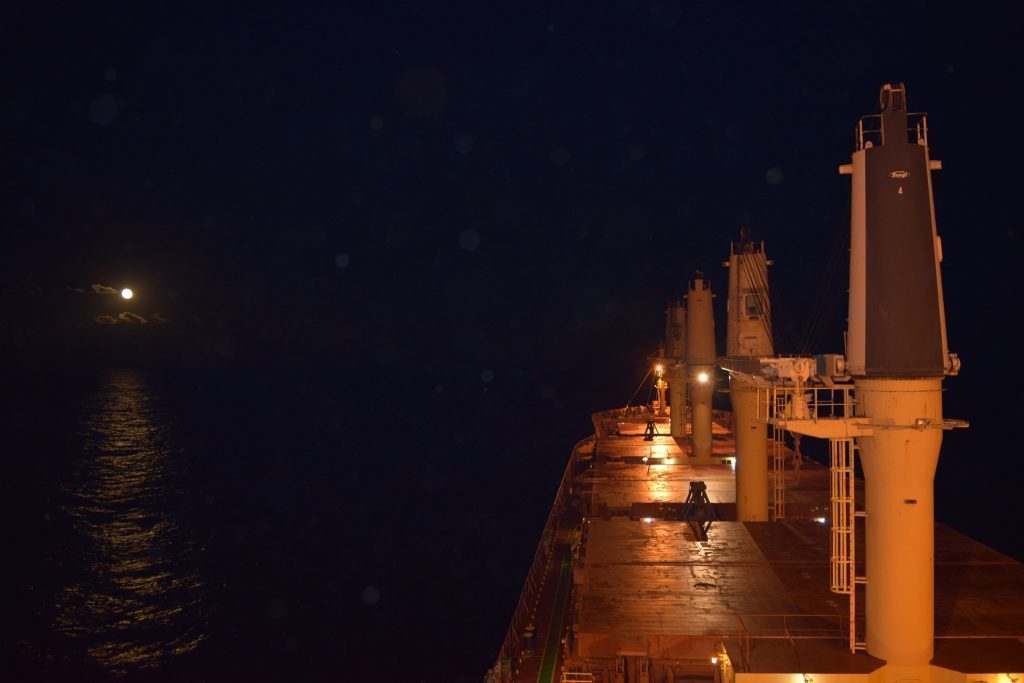印度尼西亚禁止未经加工的矿石和矿物的出口将导致镍矿石贸易减少,从而损害了对小散货船的需求。然而,据航运咨询公司德鲁里(Drewry)称,随着因此铝土矿贸易从印尼到中国航线转移为几内亚到中国航线,大型散货船反而将获得发展机会。

正筹备2019第6届邮轮客滚船轮渡上海国际峰会、将发布3版不同2020中国造船地图和”2019第三届船用洗涤塔和压载水系统上海峰会”等活动的国际船舶海工网了解到。

印尼政府已决定将其禁止镍矿出口的计划提前到2020年初。预计从2020年开始镍矿短缺,中国不锈钢生产商将加快库存积累,这将导致印尼-中国的镍矿贸易旺盛,直到2019年底。但是,从长远来看,该禁令将这将对镍矿贸易造成不利影响,因为中国消费者将很难找到镍矿的替代来源。
“目前,印尼政府尚未宣布任何计划禁止铝土矿出口,但即使政府选择这样做,对整体贸易的影响也不会很大。” 用几内亚来源的铝土矿替代印度尼西亚将很容易,尽管它将增加平均运输长度,”德鲁里解释说。
印尼政府在2014年实施了类似的禁令,然后在2017年将其部分取消。在拟议禁令实施之前,印尼的镍矿出口激增,2013年下半年,印尼镍矿的出口量比去年增加了1000万吨在2012年下半年。这意味着每月增加150万吨以上。如果当前的禁令产生类似的影响,印尼的出口将在未来四个月内增加6-7百万吨。
中国占印尼出口的96%以上,预计贸易方式不会发生重大变化。由于灵便型船需要大约20天才能完成印度尼西亚和中国之间的往返航行,因此在禁令实施之前印尼出口量的增加将在未来四个月内增加30-35个灵便型船的额外需求。
然而,根据Drewry的说法,到2020年,几乎没有镍矿将从印尼运出,估计有40艘灵便型船将失去工作,这一趋势将长期持续。
印尼是全球第二大镍矿出口国,2018年占全球镍矿贸易的37%。实施禁令后,菲律宾和新喀里多尼亚等其他主要出口国要填补庞大的镍矿市场将充满挑战。禁令造成的无效。
但是,如果实施铝土矿出口禁令,将对吨英里就业产生重大影响。印尼将其大部分铝土矿出口到中国,如果印尼决定从2020年开始禁止铝土矿出口,中国将用几内亚的铝土矿取代印尼铝土矿。
铝土矿贸易从印度尼西亚转移到几内亚将增加铝土矿贸易的平均运输长度,因为几内亚和中国之间的距离超过10800海里,而印尼和中国之间只有2300海里。
德鲁里说:“获利者将主要是大型散货船,因为贸易商偏爱几内亚至中国航线上的好望角型和卡姆萨尔型船,而不是印尼中型最大型和灵便型船。”

http://www.ishipoffshore.com/html/8/2019-07-31/9707.htm


Drewry: Large Bulkers to Benefit from Indonesia’s Exports Ban
Indonesia’s ban on exports of unprocessed ores and minerals will result in reduced nickel ore trade, hurting the demand for small bulkers.
However, with bauxite trade shifting to Guinea-China from Indonesia-China, large bulk carriers will gain employment, according to shipping consultancy Drewry.
The Indonesian government has decided to bring forward to early 2020 its plan to ban exports of nickel ore. Anticipating a shortage of nickel ore from 2020, Chinese stainless steel producers will speed up their inventory build-up, which will result in strong nickel ore trade on Indonesia-China until the end of 2019. However, in the long term, the ban will be detrimental for nickel ore trade as it will be difficult for Chinese consumers to find alternate sources of nickel ore.
“For the moment, the Indonesian government has not announced any plans to bring forward a ban on bauxite exports but even if the government chooses to do so, the impact on overall trade will not be significant. It will be easy to replace Indonesia with Guinea sourced bauxite, though it will increase the average haulage length,” Drewry explained.
The Indonesian government had imposed a similar ban in 2014 before partially lifting it in 2017. In the run up to the proposed ban, Indonesia’s nickel ore exports skyrocketed and in the second half of 2013 the country exported an additional 10 million tonnes of nickel ore than in the second half of 2012. This translated into a monthly increase of more than 1.5 million tonnes. If the present ban has a similar impact, Indonesia’s exports will increase by 6-7 million tonnes over the next four months.
China accounts for more than 96% of Indonesia’s exports, and no major change in trade patterns is foreseen. As it takes about 20 days for a Handysize vessel to complete a round voyage between Indonesia and China, an increase in Indonesia’s exports before the ban will create additional demand for 30-35 more Handysizes over the next four months.
However, by 2020 with practically no nickel ore moving from Indonesia, an estimated 40 Handysize vessels will lose employment – a trend that will continue in the long term, according to Drewry.
Indonesia is the second largest exporter of nickel ore in the world, accounting for 37% of global nickel ore trade in 2018. After the ban is imposed, it will be challenging for other major exporters such as the Philippines and New Caledonia to fill the huge void created by the ban.
However, if the ban on bauxite exports is implemented it will have a major impact on tonne-mile employment. Indonesia exports most of its bauxite to China, and if Indonesia decides to ban bauxite exports from 2020, China will replace Indonesian bauxite with bauxite from Guinea.
A shift in bauxite trade away from Indonesia to Guinea will increase average haul lengths on bauxite trades as the distance between Guinea and China is more than 10,800 nautical miles compared with only 2,300 nautical miles between Indonesia and China.
“The gainers here will primarily be large bulkers, as traders prefer Capesize and Kamsarmax vessels on the Guinea-China route, as opposed to Supramaxes and Handysizes on Indonesia-China,” Drewry said.
Source: World Maritime News



















